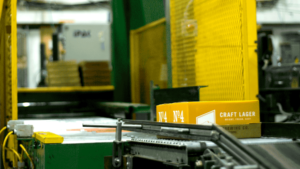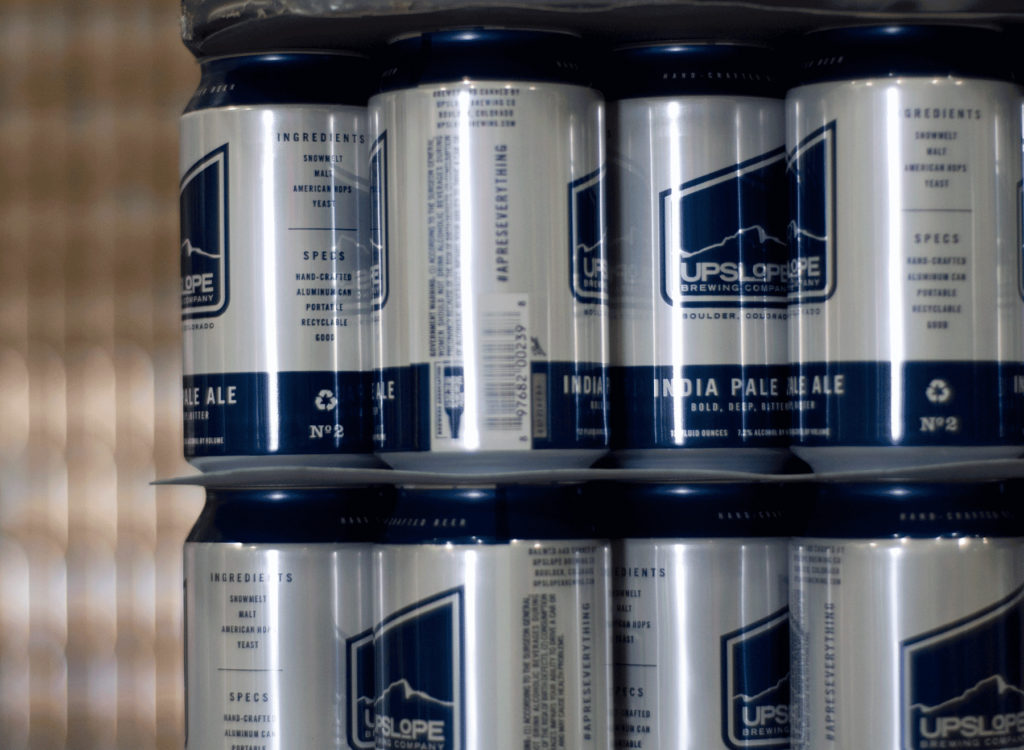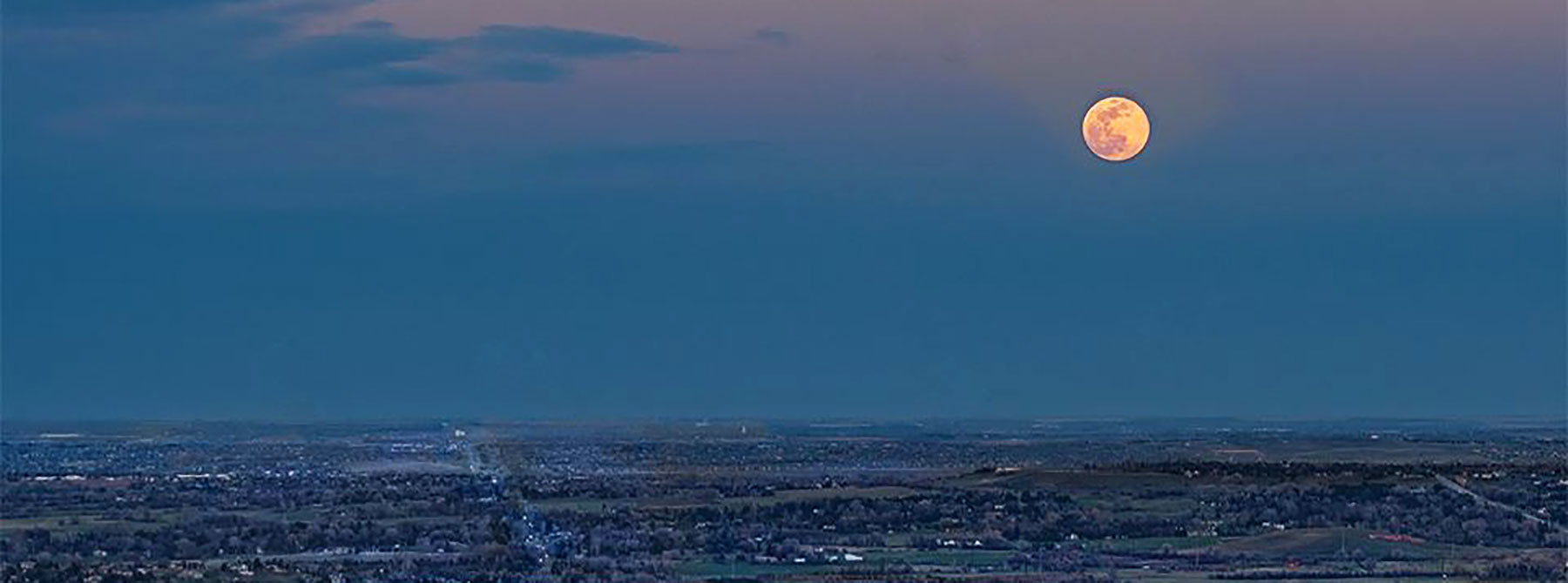A second home mortgage in, failure wasn’t an option for Matt Cutter, or his fellow Upslope founders Henry Wood and Dany Pages, when they founded the iconic Boulder brewery in 2008.
“We never had that (failure) conversation,” Cutter tells me one recent sunny afternoon on the patio of the 27,000-square-foot Flatiron Park brewery and taphouse where Upslope now produces most of its beer. It moved here in 2013.
But it was pulling the trigger on a one-year lease on a 2,500-square-foot space in north Boulder five years earlier that started it all, on April 4, 2008, a decade after Matt drew up the business plan.
He caught the craft beer bug upon moving to Boulder from Cleveland in 1991 to ski. He soon took up homebrewing, with multiple batches going at once and his kids as bottlers. In 1996, he decided enough was enough and took an entrepreneur class at Front Range Community College to draw up a microbrewery business plan.

He had no money to get off the ground so Matt tabled the business plan and got a real job — a project manager at IBM.
A decade later, after having met Dany and Henry, he was ready to try again, with the wind and the pressure of a second mortgage behind his back. Matt emailed Dany about signing the lease. Dany, who had returned to his native Argentina, bought a plane ticket and arrived two weeks later.
Henry had a background in outdoor education, and all three loved the outdoors (as so many of us do here), that the beer’s became “premium ales and lagers for the active, outdoor craft beer enthusiast,” which still holds today.
Upslope beer
As Matt says, Upslope has always been about beer to take with you on adventures Upslope — “well-balanced, easy-drinking, refreshing.”
As such, Upslope embraced canning its beer. Its description gives new appreciation for cans — a crushable, recyclable, unbreakable, portable beer container. Upslope was among the first dozen or so craft breweries that canned its beer. It has never done bottles.

Uplsope’s empty India Pale Ale cans, ready for beer and a ride into the mountains. Photo: Paul Hagey, BLDRfly.
With a production of just over 31,000 barrels last year, Upslope was the sixth largest craft brewer in Colorado and No. 93 in the nation, according to Brewers Association numbers.
A vast portion of its revenue (86 percent) comes from distribution primarily to states in the Rocky Mountain region — Montana, Wyoming, Utah, Colorado, New Mexico, Arizona, Nebraska, Matt says. Just 14 percent from its two taprooms.
Its main brewery enjoys a captive audience of 8,000 workers in Flatiron Park, who are also attracted to Ozo Coffee‘s outpost next door.
It maintains its original taproom on Lee Hill in far north Boulder as an experimental brewing location and taproom. It has a barrel-aging program there with 70-barrel capacity.
I dropped by one afternoon and found Upslope special projects brewer Alex Meyer cleaning up. Among wooden barrels stacked to high warehouse ceilings were two newer 30-gallon vertical wood barrels where Alex says Upslope is experimenting with sour beers.
He’s also working on an experimental IPA for Upslope’s upcoming tenth anniversary.
Competition
When Upslope launched, it was the first microbrewery to open in the area in years, Matt says.
You could say it was the leading edge of Boulder’s craft beer third wave, which, depending on your definition, may be just waning now.
2008, as you may remember, was not a good year to start anything. But grinding up in those harder times might have actually been a boon, allowing the firm to establish a relationship with consumers distributors in a quieter market.
And the craft beer market has gotten extremely competitive. When Upslope launched a decade ago, there were approximately 1,400 craft breweries in the U.S. Now there are close to 7,000!
At one point the category as a whole saw double-digit annual growth, but that is no more.
Controlling destiny
A year ago, Upslope partnered with an investor to buy its 42,000-square-foot Flatiron Park building.
As it was dumping hundreds of thousands of dollars into more brewery infrastructure, such as custom chillers and a chilling system that allow it to finely control fermentation speed in its brewing tanks by raising and lowering the temperature, Upslope wanted to better protect that investment and control its own destiny.
It can increase production by a quarter in its current building, which Matt says it will do, following a strategy of going deeper first in existing markets and then slowly wider.
On Upslope
Matt on the great Upslope name:
Upon moving from Cleveland to Boulder, I had never heard of the word “upslope” or “upslope conditions,” and experienced it before really understanding what it was.
It is a weather phenomenon relatively unique to the Front Range in which cold air comes down from the northwest and clashes with moist air heading north from the Gulf of Mexico.
When the two meet, the weather pattern reverses direction and instead of heading west to east, it moves from east to west, rising and cooling as it goes up the slope of the Front Range.
My experience with this was mostly in the form of 14-plus-inch snowstorms, which to me was exciting, and I loved the chaos that it created. Exciting, chaotic, and a local phenomenon … yup this was a good word to hang our hat on.



